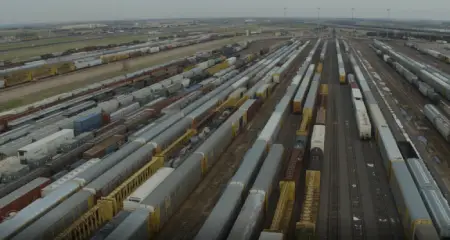
Since the beginning of railroads and locomotives, rail yards have been an essential tool to facilitate train travel. These depots allow trains to switch tracks, change their cars, and get the maintenance that they need after running 24/7. From fuel tanks to branching tracks, there is a lot to be seen and utilized at a rail yard. But like every other worksite, there are hazards that people need to be aware of and safety measures that need to be taken.
Trains are giant machines that are often difficult to control. They cannot stop quickly, and they rely on the tracks for their general traveling path. Unlike cars, trains can’t swerve out of the way or slam on the brakes if something is in their path. While the average commuter car weighs around 3,000 pounds, a train can weigh anything from 4,000 tons (8,818,490 lbs) to 20,000 tons (44,092,452 lbs). In some instances, that weight can even be exceeded. Because of this, it usually takes a half-mile or more for one to stop these massive machines once the brakes are applied.
Rail Yard Safety Rules Are Important
Now imagine you are working on a rail yard: surrounded by locomotives, cars, tracks, and many other machines. Now, the need for safety becomes much more apparent. Everywhere you move in a rail yard has a train, track, or other machine that you need to be aware of. Especially in the Bailey Yard in Nebraska, the biggest rail yard in the world, there is a lot to watch out for. Because of these hazards, as well as others, it is important to know how to stay safe while working in a rail yard.
Since railroads and rail yards are such dangerous places to work, we are happy to announce that we are publishing a new Intro to Rail Yard Safety training. Keep an eye out for this and many other railroad trainings to come here on our website!
Good luck and stay safe!
